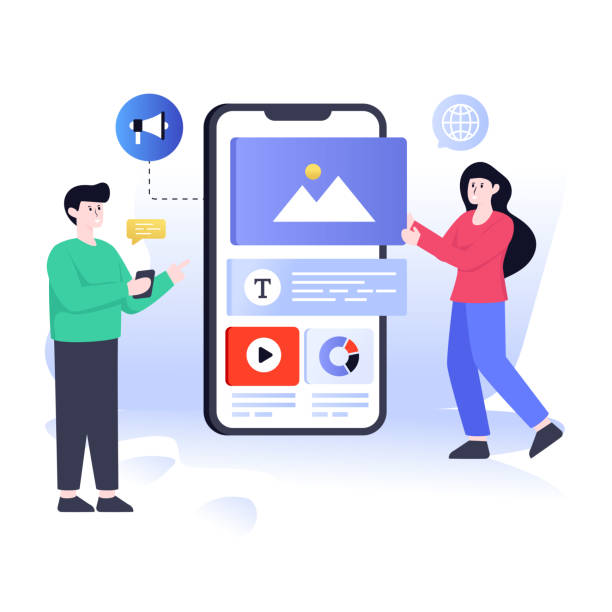1. Why is Personal Website Design More Important Than Ever Today?
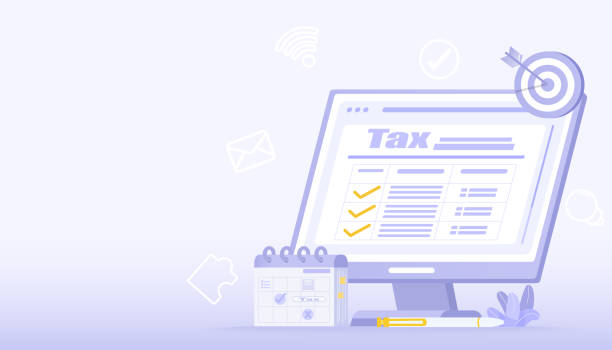
In today’s ever-expanding digital world, personal website design is no longer a luxury, but a necessity.
This personal online space allows you to have complete control over your image, brand, and message.
Unlike social networks, which have their own rules and algorithms that may limit your access to audiences, your personal website is your digital home.
In this home, you own the content, you own the data, and you can share any #specialized, #educational, #news, or even #entertaining content without restriction.
This platform allows you to showcase your skills, experiences, portfolios, and perspectives in an organized and professional manner.
A good personal website can be a gateway to new job opportunities, professional collaborations, and valuable connections.
Many employers, clients, or even universities now view individuals’ personal websites as an online resume.
This is especially vital for professionals in creative fields such as graphic designers, writers, photographers, and programmers to be able to present their portfolios in the best possible way.
Ultimately, personal website design not only strengthens your online identity but also helps you stand out in today’s competitive landscape and make your voice heard.
This is the first step towards building a sustainable and impactful personal brand in the digital age.
Do you dream of a thriving online store but don’t know where to start?
Rasaweb is your comprehensive e-commerce website design solution.
✅ Attractive and user-friendly design
✅ Increase sales and revenue⚡ Get a free consultation
2. Benefits of Building a Personal Website Beyond Expectations

Building and personal website design offer countless benefits that go beyond simply displaying an online resume.
One of the biggest advantages is the creation and strengthening of your personal brand.
In a world where many people’s first contact with you is through an online search, having a professional website means controlling your narrative.
You can tell your story, share your values, and showcase your unique personality.
This is especially crucial for freelancers, consultants, and entrepreneurs looking to attract clients and build trust.
A personal website serves as a comprehensive platform for displaying portfolios and samples of work.
Instead of sending bulky files or disorganized links, you can present all your projects in an attractive and interactive manner.
This allows potential employers or clients to quickly assess your abilities and work style.
Furthermore, a personal website is a powerful tool for marketing and networking.
Through blogs, #explanatory articles, or #analytical content, you can demonstrate your expertise and become recognized as an authority in your field.
This helps attract organic traffic from search engines and creates new opportunities for collaboration and connection with colleagues and industry leaders.
With a website, you are always accessible, 24 hours a day, 7 days a week.
This continuous access to your information provides a positive user experience for visitors and can lead to unexpected career or business opportunities.
3. Key Elements in Successful and Impactful Personal Website Design
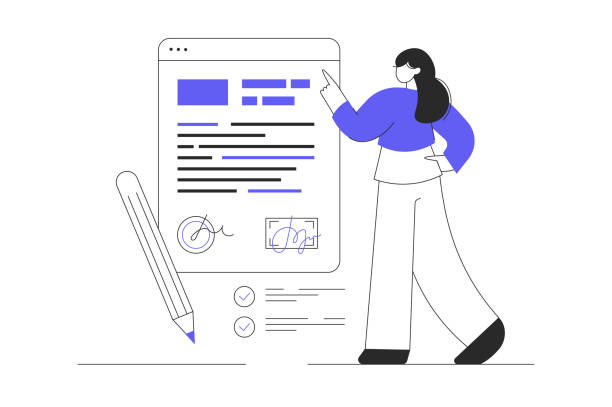
To have a personal website that is truly effective, special attention must be paid to several key elements.
The first and most important element is “user-friendly design” (UI/UX).
Your website must be visual, easy to navigate, and responsive, meaning it displays well on all devices (mobile, tablet, desktop).
The design should reflect your visual identity while being simple and attractive.
The second vital element is “quality content.”
Your content must be accurate, relevant, and engaging.
This includes your biography, portfolio, blog section (if you have one), and contact information.
#Thought-provoking content can lead to more engagement, while #guidance content adds value to the audience.
The third element is “search engine optimization” (SEO).
Even if your website is beautiful and rich in content, it will be useless if no one can find it.
Using appropriate keywords, meta descriptions, and proper internal linking structure is essential for improving your ranking in search engines.
The fourth element is “loading speed.”
Websites that load quickly provide a better user experience and also have a positive impact on SEO ranking.
Optimizing images, using caching, and choosing suitable hosting are among the solutions for increasing speed.
Finally, a clear and visible “Call to Action” (CTA) is very important.
Visitors should know what to do after viewing your website, for example, “Contact Me,” “Download Resume,” or “View Projects.”
Personal website design that successfully incorporates these elements can become a powerful tool for achieving your goals.
Below is a table of important sections in a personal website:
| Section | Purpose | Suggested Content |
|---|---|---|
| Home Page | First impression and visitor orientation | Short introduction, attractive slider, main CTA |
| About Me | Deeper introduction to you and your story | Biography, history, skills, values, personal photo |
| Portfolio/Work Samples | Practical display of abilities and projects | Selected projects with descriptions, images, link to project |
| Blog/Articles | Demonstrating expertise, attracting audience, SEO | Educational, analytical, specialized articles |
| Contact Me | Creating a communication channel with visitors | Contact form, email, phone number, social media links |
4. Choosing the Right Platform for Your Personal Website Design
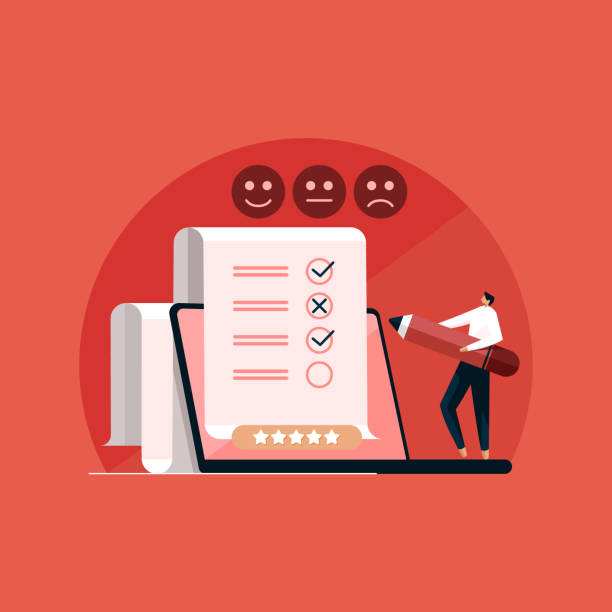
Choosing the right platform is one of the essential steps in the personal website design process.
There are various platforms with different capabilities and complexities, each with its own advantages and disadvantages.
For individuals without technical knowledge, Website Builders like Wix, Squarespace, or Zyro are excellent options.
These platforms offer a Drag-and-Drop user interface, have beautiful pre-designed templates, and require no coding knowledge.
They are ideal for quickly creating a visual and professional website and handle many technical issues such as hosting and security.
If you are looking for more flexibility and complete control over your website, Content Management Systems (CMS) like WordPress are the best choice.
WordPress is a free and open-source platform that offers endless possibilities due to its numerous plugins and themes.
Although it takes a bit more time to learn, it allows for the creation of very complex and fully customized websites.
WordPress is suitable for bloggers, small businesses, and individuals who plan to expand their website in the future.
Another option is coding from scratch using HTML, CSS, and JavaScript.
This method provides maximum control and flexibility but requires specialized programming knowledge and is not recommended for most novice users.
Platform selection should be based on your needs, technical knowledge level, and budget.
The main goal is to choose a platform that allows you to present your #educational, #specialized, and #explanatory content in the best possible way and is easily manageable.
Ultimately, regardless of the chosen platform, the goal is to create an online space that effectively reflects your identity and helps you achieve your goals.
Are you concerned about your e-commerce website’s low conversion rate and not achieving your desired sales?
Rasaweb is your specialized solution for a successful e-commerce website.
✅ Significant increase in conversion rate and sales
✅ Professional and user-friendly design to satisfy customers
⚡ Ready for an online sales transformation? Get a free consultation!
5. What Should Your Personal Website’s Content Strategy Be?
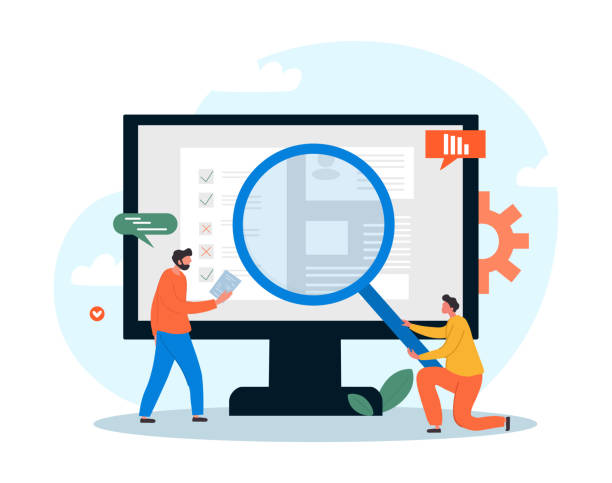
Content strategy is the heart of any successful website, and personal website design is no exception.
Your content should not only reflect your identity and expertise but also be engaging and valuable to your target audience.
The first step is identifying your audience: who will visit your website and what are their needs? Are they looking for #explanatory information, or are they interested in #analytical content? The answers to these questions will shape the type and tone of your content.
The main content of a personal website usually includes a biography (your story, specialties, and goals), a portfolio (high-quality work samples with relevant descriptions), and a contact section.
However, to create added value and attract more audience, a blog or articles section can be very effective.
In this section, you can write educational articles in your field of expertise, share your personal views on related topics (#thought-provoking content), or even cover industry news and trends (#news content).
Content format diversity is also important: use text, images, videos, infographics, and podcasts to make your website more dynamic and engaging.
Also, don’t forget to optimize your content for search engines (SEO).
Intelligent use of keywords, attractive titles, and internal and external linking helps improve your website’s visibility.
Remember that content should be updated regularly.
A website with outdated content loses visitor trust.
Planning for new content production and reviewing existing content keeps your content strategy dynamic and relevant.
Personal website design with a strong content strategy helps you not only showcase your expertise but also build a deeper connection with your audience.
6. Search Engine Optimization (SEO) Principles for a Personal Website
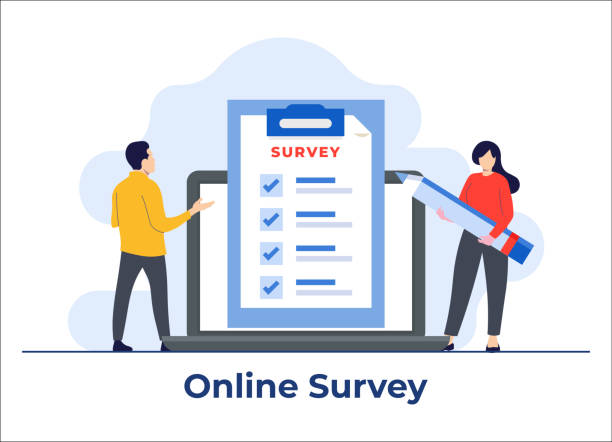
Search Engine Optimization or SEO is an integral part of personal website design that helps you rank higher in search results and allows more people to find your website.
The first step in SEO is “keyword research.”
You need to identify the words your target audience uses to find services or content related to your expertise.
Tools like Google Keyword Planner can be helpful in this regard.
After identifying keywords, naturally incorporate them into your titles, subheadings, paragraph text, and image descriptions.
“On-Page Optimization” includes actions performed directly on your website pages.
This involves writing compelling meta titles (Title Tags) and meta descriptions that not only include keywords but also encourage users to click.
Using descriptive and short URLs, optimizing images (compression and adding Alt Text), and properly structuring content using H1, H2, and H3 tags are also of high importance.
“Technical Optimization” also includes aspects such as website loading speed, responsiveness (Responsive Design) for various devices, and proper website structuring for search engine crawlers.
A correct XML Sitemap and Robots.txt file help search engines index your website better.
“Link Building” also has two types: internal (linking your own pages to each other) and external (getting links from other websites).
Quality links from reputable websites increase your website’s authority.
Remember that #specialized and #educational content that is regularly updated naturally strengthens your SEO, as search engines favor fresh and valuable content.
7. Principles of Visual Design and User Experience in Personal Website Design
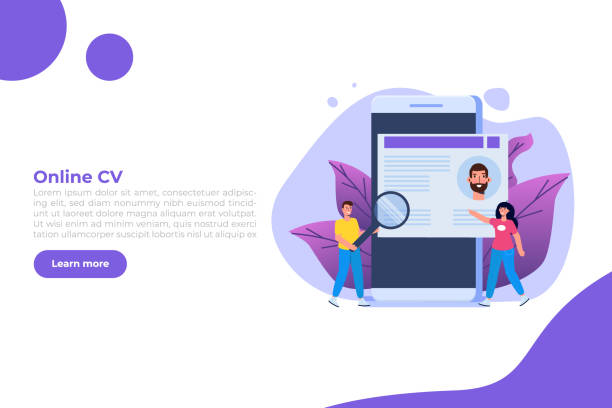
In personal website design, visual appeal and user experience (UX) play a vital role.
An attractive and user-friendly design not only draws visitors in but also keeps them on your website for longer and helps you achieve your goals.
The first principle is “simplicity and minimalism.”
Avoid cluttering the page with unnecessary elements.
A clean and organized design helps users focus on the main content.
“Visual consistency” is also very important; using a consistent color palette, uniform fonts, and a similar graphic style across all pages conveys a sense of professionalism and integrity.
“Responsive Design” is an absolute necessity.
Your website should display correctly and beautifully on every device, from smartphones to large monitors.
Google and other search engines also give higher rankings to responsive websites.
“Readability” of content is also of high importance.
Choosing fonts that are easy to read, using appropriate text sizes, and applying sufficient line spacing and paragraph breaks improve the reading experience.
Do not underestimate “Whitespace”; this space allows the eyes to rest and enables other elements to be seen better.
Finally, “Easy Navigation” is one of the most important aspects of UX.
Menus should be clear, logical, and accessible so that users can easily find what they are looking for.
Using #guidance and #explanatory content in attractive visual formats (such as infographics) can help improve the user experience.
A strong UI/UX design for your personal website ensures that visitors have a positive experience and are more inclined to return and interact with your content.
Below is a table of important visual elements in design:
| Visual Element | Importance in Design | Key Tips |
|---|---|---|
| Color Scheme | Creating mood and visual identity | Using 2-3 main colors, color psychology, suitable contrast |
| Typography (Fonts) | Text readability and aesthetics | Choosing readable fonts, using a maximum of 2-3 fonts, appropriate sizing |
| Images and Videos | Visual appeal and message conveyance | High quality, optimized size, relevance to content |
| Layout | Organizing information and eye-flow path | Simple and predictable, use of grid, visual balance |
| Whitespace | Creating visual calm and focus | Sufficient use to separate elements, visual breathing room |
8. How to Introduce and Promote Your Personal Website?
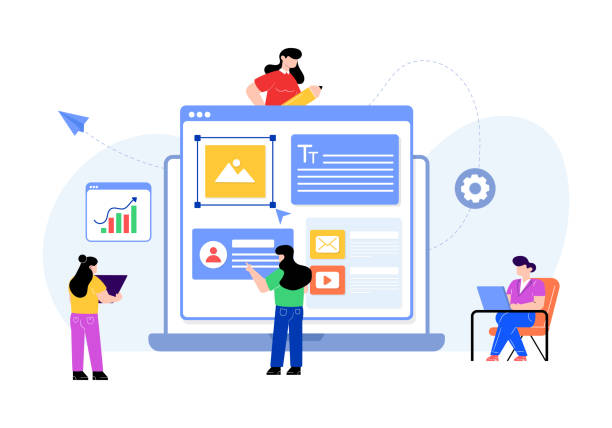
After completing your personal website design, the next step is to introduce and promote it to attract targeted visitors.
Having a great website is only half the battle; you need to ensure people know it exists.
One of the most effective ways is “sharing on social media.”
Place your website link in your LinkedIn, Instagram, Twitter, and Facebook profiles, and share it every time you publish new content (#news, #educational, or #analytical articles).
Use LinkedIn, in particular, to showcase your expertise and connect with potential colleagues and employers.
“Email marketing” is also a powerful channel.
If you have a list of contacts (colleagues, previous clients, students), send a friendly email introducing your website and invite them to visit.
Offering exclusive content or a regular newsletter can help maintain engagement and encourage repeat visits.
Don’t forget “offline and online networking.”
Attend events, conferences, and webinars, and introduce your website at every opportunity.
Have your digital or physical business card ready with your website link.
“Content marketing” also plays a key role in attracting traffic.
Writing high-quality articles, creating #thought-provoking and valuable content, and optimizing it for SEO helps you get organically discovered by search engines.
Participating in forums and specialized groups related to your field can also serve as a way to indirectly promote your website.
Finally, “collaboration with others” (Collaboration) can help expand your reach.
Collaborate with complementary individuals or websites in your field, write as a guest on other blogs, or publish interviews on your website.
These activities not only help promote your website but also boost your credibility.
Tired of losing business opportunities due to not having a professional corporate website? Don’t worry anymore! With Rasaweb’s corporate website design services:
✅ Your brand’s credibility and professionalism will increase.
✅ You will attract more customers and sales leads.
⚡ Ready to get started? Get a free consultation now!
9. Continuous Maintenance and Updates for Your Personal Website

Personal website design is only the beginning; continuous maintenance and updates are essential to keep it functional and relevant.
An outdated or broken website not only creates a poor user experience but also damages your professional credibility.
The first and most important aspect is “content updates.”
Your website should always reflect your latest information, portfolio, and achievements.
If you have a blog, regularly publish new articles (whether #specialized, #explanatory, or #news).
This not only encourages visitors to return but also helps improve your SEO ranking.
The second aspect is “technical and security updates.”
If you use a CMS like WordPress, you should regularly update its core, themes, and plugins.
These updates often include bug fixes, performance improvements, and most importantly, addressing security vulnerabilities.
Regular backups of your website (at least weekly) are also crucial to prevent data loss in case of any issues or cyber-attacks.
“Website performance monitoring” is also an important part of maintenance.
Use tools like Google Analytics to track traffic, user behavior, and traffic sources.
This data helps you understand which parts of your website are most popular and where improvements are needed.
Regularly checking for broken links and corrupted images also helps maintain your website’s quality.
Ultimately, your personal website design should evolve with technological changes and user preferences.
This may involve minor or even major redesigns in the future to ensure your website always remains fresh, modern, and efficient.
10. What Trends Does the Future of Personal Website Design Show?
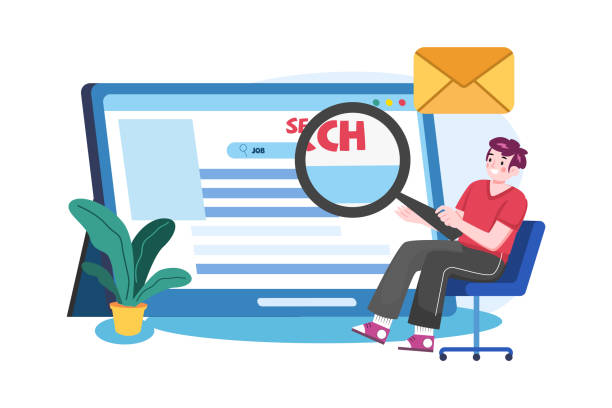
The future of personal website design is rapidly changing, with new trends emerging that are transforming user experience and how we interact with the digital space.
One of the most important trends is “advanced personalization.”
Using artificial intelligence and machine learning, websites will be able to dynamically tailor content and experiences based on each visitor’s interests and behavior.
This will be particularly effective for delivering #specialized, #educational, and #guidance content.
Another trend is “focus on podcasts and short videos.”
With the increasing popularity of audio and video content, personal websites will increasingly become platforms for hosting and broadcasting these formats, which will allow for the presentation of #entertaining and #analytical content in a more engaging way.
“Voice” will also play a more prominent role; with the expansion of voice search and smart assistants, websites will need to be optimized for voice interaction.
“Minimalist design and flawless user experience” will remain a key principle, but with a greater focus on subtle animations, micro-interactions, and smooth transitions that enhance the visual and sensory experience.
“Virtual Reality (VR) and Augmented Reality (AR)” are also gradually making their way into personal websites, especially for designers, artists, and architects who can showcase their projects in an interactive and immersive manner.
Furthermore, concerns regarding “data privacy and security” will increase, and personal websites will need to offer stronger solutions for protecting user information.
Ultimately, the future of personal website design is moving towards platforms with smarter, more interactive, and more secure capabilities, enabling individuals to manage their online presence in an increasingly engaging and effective way.
Frequently Asked Questions
| Question | Answer |
|---|---|
| Why should I have a personal website? | A personal website helps you build your personal brand, showcase your skills and portfolio, connect with your audience, and gain new career opportunities. |
| What steps should be taken to design a personal website? | The steps include defining your goal, choosing a domain name and hosting, selecting a platform (e.g., WordPress), designing the user interface, creating content, optimizing for search engines (SEO), and launching. |
| Do I necessarily need to know how to code to design a personal website? | No, by using Content Management Systems (CMS) like WordPress or Website Builders like Wix and Squarespace, you can design your website without needing to code. |
| What is a Domain Name and how do I choose one? | A domain name is your website’s address on the internet (e.g., yourname.com). It is best to choose a name that is short, memorable, relevant to you or your business, and has an appropriate extension (like .com, .ir). |
| What is Hosting and why do I need it? | Hosting is a space on the internet where all your website’s files and information (like images, texts, codes) are stored so that they are always accessible to users. Without hosting, your website will not be visible. |
| What should a personal website’s content include? | Content typically includes an About Me page, portfolio (work samples), services/skills, a blog (articles), contact information, and a contact form. |
| How can I optimize my personal website for search engines (SEO)? | By using relevant keywords, producing high-quality content, improving website loading speed, being mobile-responsive, building internal and external links, and optimizing title and description tags. |
| Why is Responsive Design important for a personal website? | Responsive design ensures that your website displays correctly and provides a good user experience on all devices (computer, tablet, mobile), which is also important for SEO. |
| What should I do for my personal website’s security? | Use an SSL certificate (HTTPS), regularly update your platform and plugins, use strong passwords, perform regular backups, and install a firewall or security plugins. |
| How can I increase my personal website’s traffic (visitors)? | Through SEO optimization, content marketing (blogging), social media activity, email marketing, online advertising, and collaboration with other websites. |
And other services of Rasaweb Advertising Agency in the field of advertising
Smart Advertising Campaign: Transform SEO ranking improvement with user experience customization.
Smart Digital Advertising: A combination of creativity and technology for user engagement through marketing automation.
Smart Digital Branding: Transform online growth with custom programming.
Smart Conversion Rate Optimization: An effective tool for digital branding with custom programming.
Smart Conversion Rate Optimization: A professional solution for customer acquisition focusing on precise audience targeting.
And over hundreds of other services in the field of internet advertising, advertising consulting, and organizational solutions
Internet Advertising | Advertising Strategy | Advertorials
Sources
Complete Guide to Personal Website Design on Iran Digital
The Importance of Building a Powerful Digital Identity – Virgul
Best Platforms for Building a Personal Website
Important Tips for Designing Resume and Portfolio Websites
? For achieving your digital marketing goals and having an unparalleled exclusive website design, Rasaweb Afarin is your best choice. With us, transform your business in the online world.
📍 Tehran, Mirdamad Street, next to Bank Markazi, Southern Kazeroon Alley, Ramin Alley, No. 6

